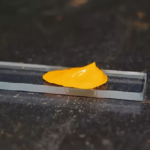A lot of lines are written about the positive qualities and disadvantages of aerated concrete. Someone, once faced with this material, in the future categorically against its use. Someone on the contrary – from the heart praises him. But if you figure it out, any, even the most innovative material has pros and cons of.
General information about aerated concrete
Video about the construction of houses from aerated concrete
Gas concrete is an environmentally friendly pure material of white color, which includes several components:
Cement;
sand;
lime;
Aluminum powder.
Blocks are obtained with extremely accurate sizes. Therefore, masonry can not be done using the usual cement-sand mortar, but with mineral glue, which does not contribute to the formation of the so-called “cold bridges”.
The construction of GAZ has been used for a long time – about the middle (or even earlier) of the last century. And these houses are still standing without exfoliation of masonry and cracks. Therefore, we can say that in our climate, gas concrete reacts quite well to not too favorable weather conditions.
Everyone knows that when freezing, water can destroy even the most durable structures. And due to the fact that in the cavity of the aerated concrete block there is a system of pores, a small amount of water when freezing is simply displaced into neighboring voids. Therefore, there is no cracking in the blocks. The material perfectly holds heat, promotes the creation of a comfortable microclimate and absolutely does not support combustion.
How to get around the disadvantages of aerated concrete?
Preparatory stages before the construction of aerated concrete
When planning construction, it is necessary to pay attention to the shortcomings of houses from aerated concrete. However, this applies to any other materials.
It was said above that the blocks do not crack when expanding frozen water. This is all true only until you build a house in raw areas. Due to the large number of pores, the blocks are very quickly absorbed by excess moisture, and if the walls are freezed, then as a result, it is gradually collapsing.
However, the situation can be saved. Firstly, it is advisable to live in an aerated concrete house constantly, so that in the cold time the masonry does not freeze. If it is planned to subsequently decorate the facade with plaster, stone, siding, etc. D., In the project, it is necessary to provide a device for ventilation ducts.
In addition, aerated concrete has a very low prismatic strength. This means that the material with uneven loads is subject to cracking. The slightest subsidence of the foundation – and cracks are guaranteed.
The only true type of foundation for “aerated concrete” is a reinforced concrete slab.
In domestic plan, aerated concrete can also cause some troubles. The material is easily crumble, so you are unlikely to be able to reliably hang on the wall some cabinet or shelf. You can bypass the problem if you apply special anchors for such purposes that burst concrete from the inside, and thanks to this everything will be perfectly held.
If you were not frightened by these rather unpleasant disadvantages of aerated concrete, then we will light it and its undoubted advantages.
Advantages, leveling disadvantages
Porous material, which is gas concrete, perfectly retains heat. In such a house in winter it will always be comfortable. Due to the ability of the walls to “breathe” in the premises, an excellent microclimate will be established with an optimal level of humidity, which will not contribute to the formation of fungi and mold. In addition, this remarkable property of “gas” will save a lot: work is greatly simplified due to the fact that it will not be necessary to create additional insulation.
These advantages of aerated concrete are supplemented by its ease. Compared to other building materials for the construction of houses, a rather impressive “gas” is quite impressive, and therefore, the pressure of the walls on the foundation will be minimal and their shrinkage will be small.
The interior decoration of a house from aerated concrete will not require significant effort. Thanks to the exact sizes of the blocks, before putting them, they just need to be wiped with a rough skin. Naturally, this is done if the walls of the walls are not planned with drywall.
Now we can say that aerated concrete is a unambiguous material for building any residential building.





